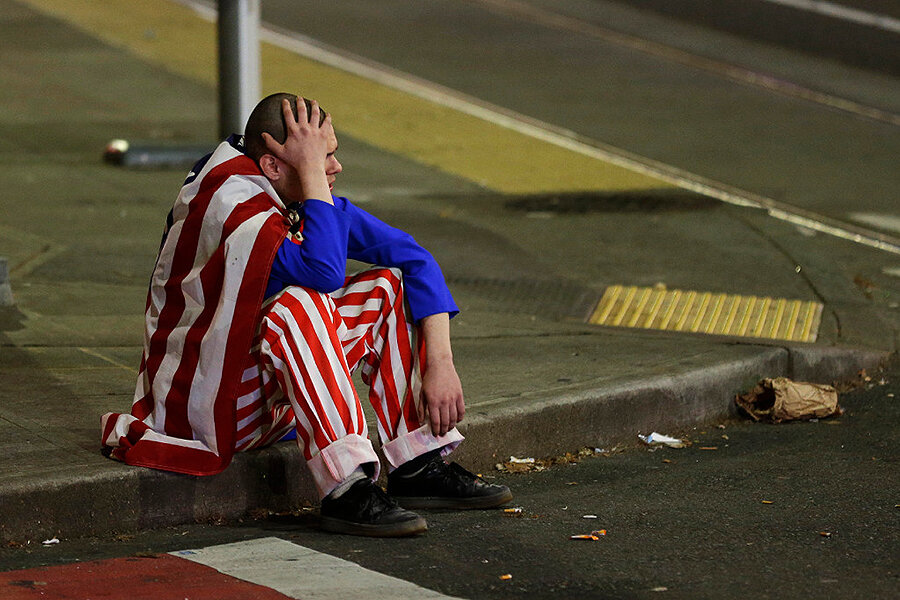In several major US cities, protesters march against Trump presidency
Loading...
After Donald Trump’s surprise presidential victory, many rural white voters felt that their voices were finally heard. Now, urban protesters are raising theirs.
On Wednesday night, shouts of “Not my president” rang through many major US cities. The demonstrations drew tens of thousands of protesters, many of whom fear the president-elect’s campaign rhetoric could translate into deportation and violence toward immigrants, Muslims, and other marginalized groups.
“I’m just really terrified about what is happening in this country,” Adriana Rizzo told Reuters in Chicago, while holding a sign that read: “Enjoy your rights while you can.”
Many of the demonstrations, while heated, ended without violence or incident. In New York, about 1,000 gathered in midtown Manhattan and made their way toward Trump Tower on Fifth Avenue, and in Boston, some 4,000 marched from Boston Common to the Massachusetts Statehouse.
In Los Angeles, police in riot gear sought to disperse protesters who had blocked traffic on the busy 101 freeway, leading to 13 arrests. An earlier rally in the city drew more than 5,000 people.
Demonstrators in many cities expressed concerns about the president-elect’s campaign platform. Many “Dreamers” – residents who were brought to the United States at a young age, by parents who entered illegally, and whose nickname comes from the DREAM Act – fear deportation under a Trump presidency.
An Oakland, California protest, which drew a crowd of about 6,000, ended after a clash between protesters and law enforcement. Police threw chemical irritants, according to a Reuters witness, while demonstrators allegedly flung fireworks and other objects.
Tuesday night’s election result was a surprise for many in the American elite. But an increasingly disgruntled class of rural, middle-class white Americans – largely responsible for Trump’s victory – say they are finally being heard.
“People asked why Trump was going to small places and having rallies. ‘To make yourself feel good?’ ” Al Cross, director of the Institute of Rural Journalism and Community Issues at the University of Kentucky, told The Christian Science Monitor on Wednesday. “No, he was exercising his organic turnout strategy, to generate enthusiasm and a feeling of purpose and being part of a movement among rural people. And it worked. Typically, the rural vote is a little bit less than urban. But that switched.”
In the wake of an unusually divisive election cycle, the path toward mutual understanding is still unclear. But some have already taken small steps to close that riff.
The Monitor’s Linda Feldmann reported:
For Brian Williams of Valparaiso, Ind., it was reaching out to a beloved cousin whose Facebook posts clearly put her on the opposite side of the political divide. For Larry Seaquist, a retired Navy captain and a candidate for Washington's state legislature, it meant a conscious decision to run a campaign focused on policy and not personalities. Though he ultimately he didn't win, the tone he set marks a different sort of victory.
The president will have a key role in setting the tone of progress, either by reaching out across party lines or refusing to do so. But much of the work will happen at a smaller scale, analysts say – through local leaders, communities, and individual action.
This report includes material from Reuters and the Associated Press.








